 |
IAA Severo Ochoa Meeting: Addressing key astrophysical questions from Granada Place: Parque de las Ciencias Summary: The “IAA Severo Ochoa Meeting: Addressing Key Astrophysical Questions from Granada” will be held in Granada, from Tuesday October 18th, to Friday, October 21st, 2022. Our Severo Ochoa IAA Colloquium programme, was implemented in 2019 to allow senior staff from top level institutions to visit IAA to impart talks and work hands-on with our staff. It was timely transformed into web-loquia to circumvent the impossibility/difficulty for travelling due to Covid-19Due to COVID pandemics, and hence the online format was the rule. Being aware of the importance of interactions beyond the screen, we organise this 4-day meeting, where we plan to gather our web-loquium speakers and other internationally renowned researchers, with the aim of promoting the discussion with IAA scientists. The *morning sessions* will have around 4 keynote speakers each, and will be devoted to the topics:
The *afternoon sessions* will be devoted to discussions and in-depth interactions between the invited researchers and the IAA scientific staff. They will follow up the morning sessions with the aim to identify the related outstanding questions that can be tackled collaboratively with the IAA commnuity in the coming years. Date: October, 18th- 21st 2022 URL: https://www.granadacongresos.com/severoochoa |
|||
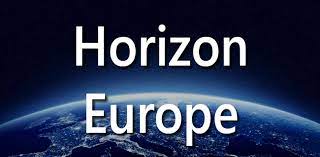 |
Horizon Europe: Workshop on RESEARCH INFRASTUCTURE Place: IAA-CSIC Summary: On 9 June 2021, the Agencia Andaluza del Conocimiento (AAC) and the Instituto de Astrofísica de Andalucí (IAA-CSIC) are organising a virtual conference to present in Andalusia the INFRASTRUCTURES call of Horizon Europe, the recently launched Framework Programme for Research and Innovation of the European Union for the period 2021-2027. The event, in which CIEMAT (Centro de Investigaciones Energéticas, Medioambientales y Tecnológicas) also collaborates, aims to present the Research Infrastructures Work Programme 2021-2022, as an instrument of the European Commission to fund services to research centres and groups. The conference will be aimed primarily at research staff and research groups from universities and research centres, and in general at the entire scientific community. Registrations can be made until 7 June at 10:00 a.m.. Date: June, 9th2021 URL: https://www.juntadeandalucia.es/actualidad/eventos/detalle/217675.html |
|||
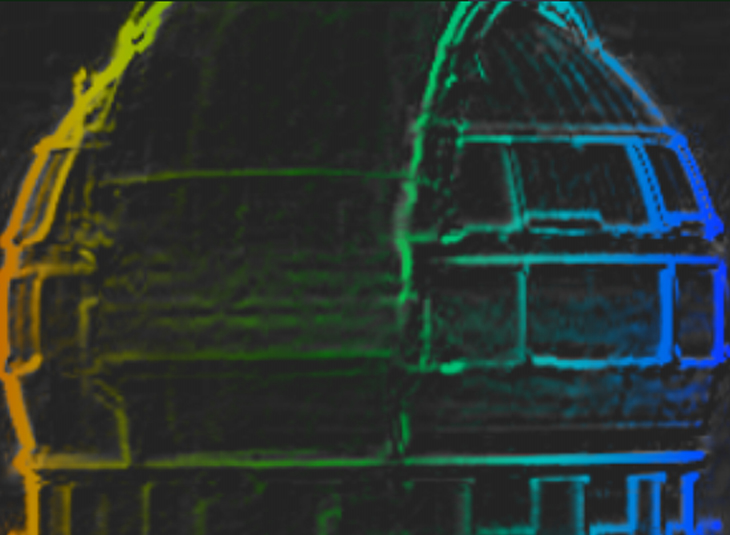 |
Panoptic spectroscopy of our universe with OSIRIS+MAAT at GTC Place: On line Summary: MAAT* (Mirror-slicer Array for Astronomical Transients) is proposed as a visitor mirror-slicer optical system that will allow the OSIRIS spectrograph on the GTC the capability to perform Integral-Field Spectroscopy (IFS) over a seeing-limited field-of-view 14.20'' x 10'' with a slice width of 0.303''. MAAT will enhance the resolution power of OSIRIS by 1.6 times with respect to its 0.6'' wide long-slit. All the eleven OSIRIS Grisms and VPHs will be available to provide broad spectral coverage with low / moderate resolution (R=600 up to 4100) in the 360 - 1000 nm spectral range. MAAT top-level requirements will broaden its use to the needs of the GTC community for a wide range of outstanding science topics that covers the entire astronomy given its unique observing capabilities well beyond time-domain astronomy. The GTC equipped with OSIRIS+MAAT will also play a fundamental role in synergy with other facilities operating at the Observatorio del Roque de los Muchachos. This 1-day workshop intends to collect the interest from the GTC community on MAAT. We will present the different aspects of the instrument, including science and technical specifications, and an outline of the instrument concept. Everyone is welcome to present key science projects that will encourage and support the development of this new facility. Date: May, 5th2020 URL: https://case.iaa.es/ |
|||
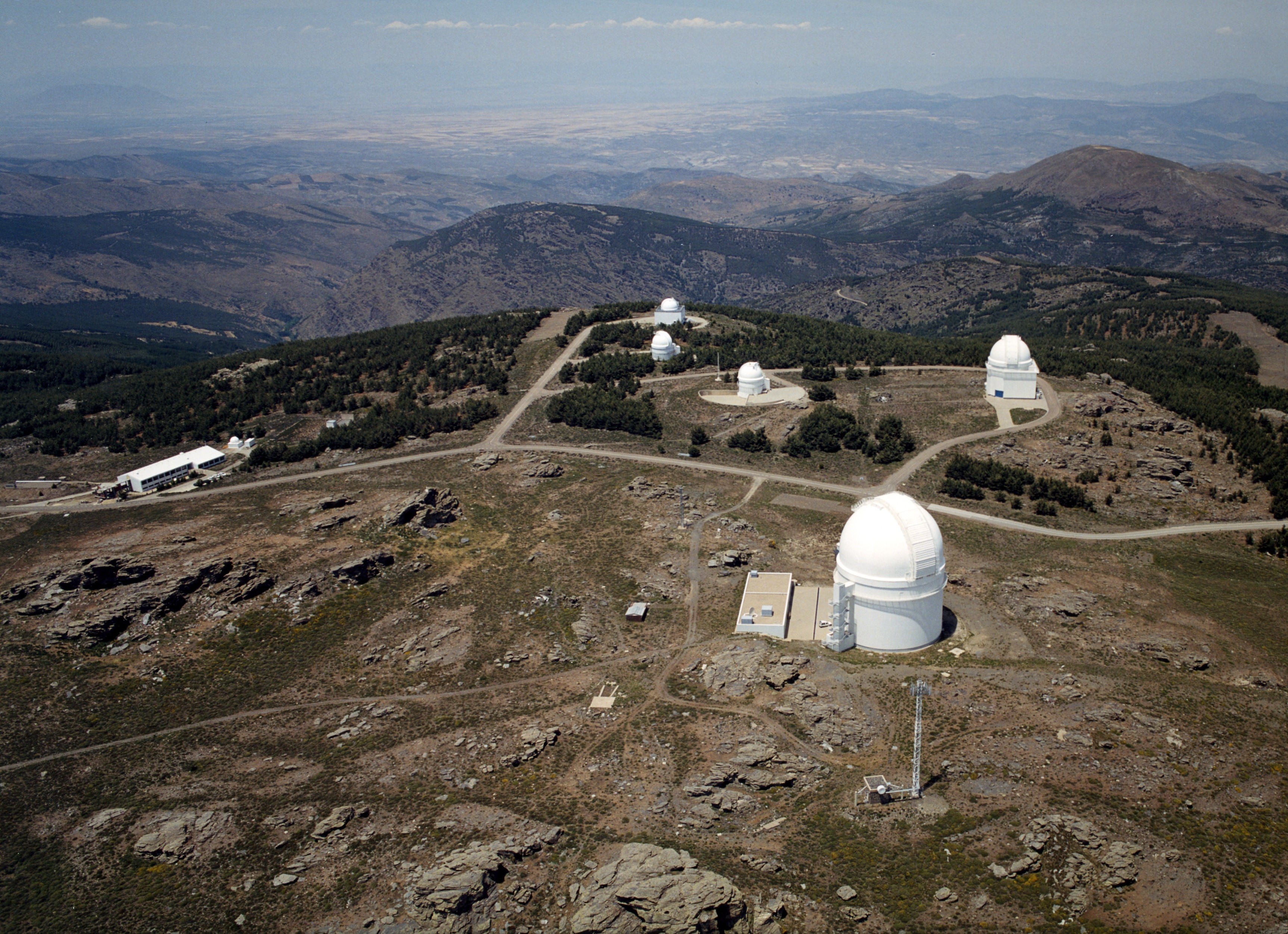 |
Public surveys and new instrumentation for Calar Alto Observatory Place: IAA-CSIC + On line Summary: The Calar Alto observatory (CAHA) is a key institution for the international astronomical community, for its highly competitive astronomical facilities (telescopes and instrumentation). From 2019 on, the current administration of CAHA includes the Junta de Andalucía as a new partner - replacing the Max Planck Gesellschaft -, and together with the Spanish National Research Council (CSIC) these two institutions manage the operation of the observatory. The recent success of long-term observational projects already finished (CALIFA) or close to finalization (CARMENES), together with the innovative tradition in available instrumentation of CAHA, point to the necessity of a new call to the international astronomical community for scientific and technological proposals that will contribute to keep the level of excellence of the observatory. With this motivation, we are pleased to announce a workshop focused on two different subjects: 1. Public surveys to be carried out with instrumentation already available at the 3.5m telescope. These projects must require at least four observational semesters and a minimum of 20 nights per semester for completion. They might require simultaneous observations with other telescopes/instruments in CAHA or from other ground-based or space-born astronomical facilities. Date: March, 12th- 13th 2020 URL: |
|||
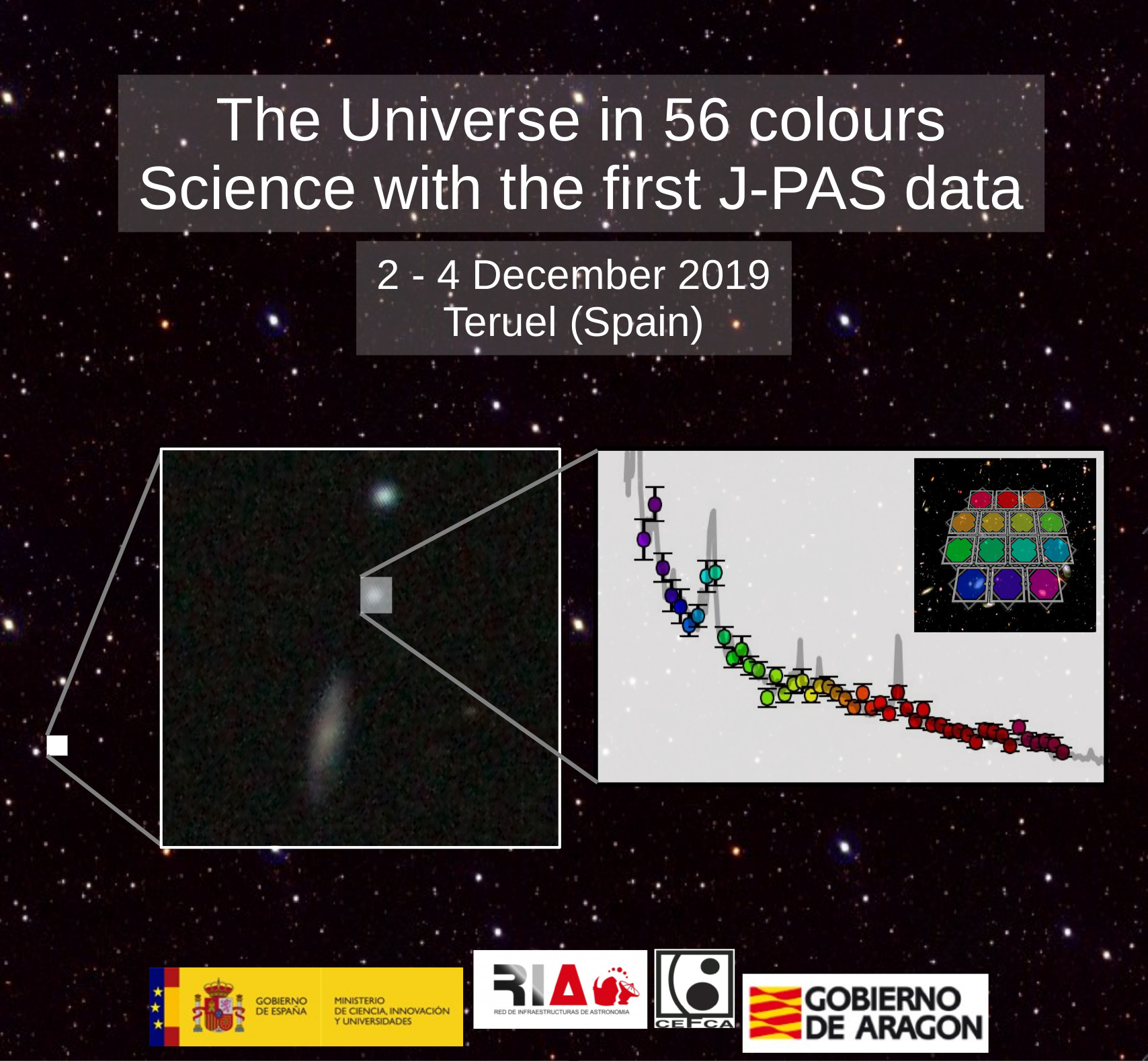 |
The Universe in 56 colors. Science with the first J-PAS data Place: Teruel Summary: The mapped J-PAS (Javalambre Physics of the accelerating universe Astrophysical Survey) will observe thousands of square degrees of the northern sky with a unique set of 56 filters (14 nm wide) in the optical range of the spectrum. J-PAS will provide high-quality photometric redshifts (~1000 km/s) for tens of millions of galaxies, and its legacy character will advance the fields of cosmology, galaxy evolution, and the study of the Milky Way. J-PAS will be carried out from the Javalambre Astrophysical Observatory (OAJ, Teruel) with the Javalambre Survey Telescope (JST; 2.5m primary mirror) and the JPCam instrument (5 degrees square field of view). While JPCam finishes its tuning at the OAJ, the JST telescope has already started the scientific operations thanks to the JPAS-Pathfinder first light camera (JPAS-PF). Throughout 2018, JPAS-PF@JST has mapped a square degree of the sky in the area of the Groth strip with the 56 filters of J-PAS and reaching the nominal photometric depth of the project. The objective of this RIA Open Meeting is to present and make public this unique data set, release the reduced images and catalogs generated, demonstrate the capabilities of J-PAS with real data and motivate the scientific exploitation of the J-PAS project by the international astrophysical community. The meeting will have a scientific-technical character, with sessions dedicated to present the observations, the reduction process, the calibration and the access to the data. There will also be sessions focused on the scientific exploitation of the first square degree of the J-PAS project, as well as on the identification and strengthening of synergies with other projects that have a significant Spanish presence and/or are carried out from other national astronomical ICTSs. Date: December, 2nd- 4th 2019 URL: https://riastronomia.es/el-universo-en-56-colores-ciencia-con-los-primeros-datos-de-j-pas/ |
|||
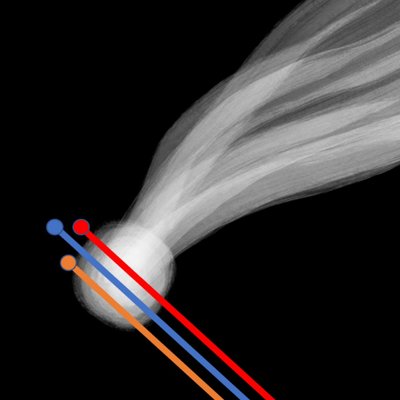 |
Comet Interceptor Full Team Meeting Place: IAA-CSIC Summary: The Comet Interceptor mission was selected by ESA in June 2019 to combine this breakthrough in comet discoveries with a compact, agile set of spacecraft that can reveal to us a huge amount about a pristine comet likely entering the inner Solar System for the first time. Although far rarer than long-period comets, Comet Interceptor will also have the capability of encountering an interstellar object passing through our Solar System if such an object is found on a suitable trajectory. The IAA-CSIC will host a full team meeting in December 2nd-3rd 2019. Date: December, 2nd- 3rd 2019 URL: https://www.cometinterceptor.space/ |
|||
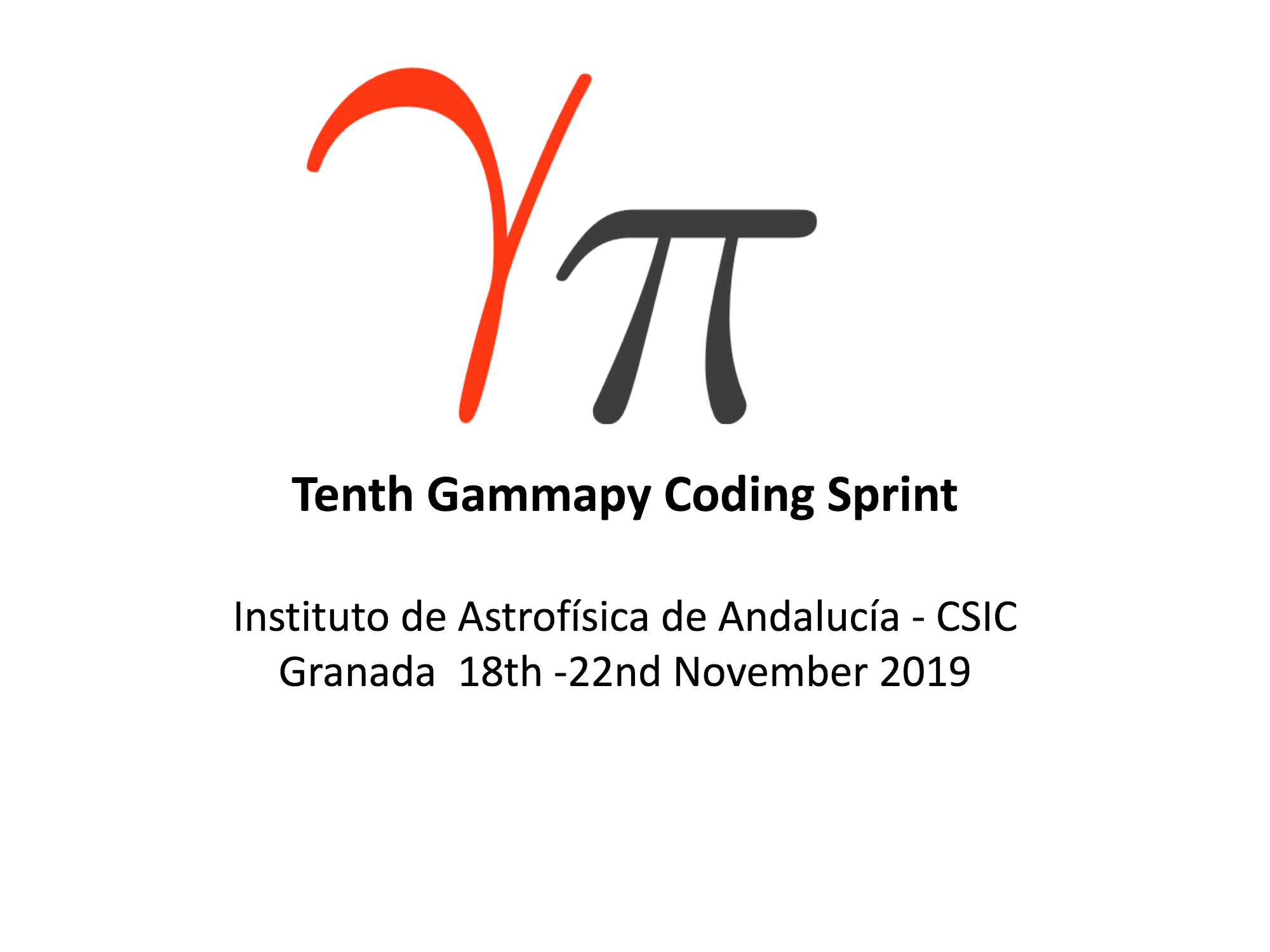 |
Tenth Gammapy Coding Sprint Place: IAA-CSIC Summary: Gammapy is an open-source Python package for gamma-ray astronomy built on Numpy and Astropy. It is a prototype for the Cherenkov Telescope Array (CTA) science tools, and can also be used to analyse data from existing gamma-ray telescopes. The tenth meeting of the Gammapy community will take place at the IAA-CSIC, in Granada (Spain) from November 18th to 22th 2019. Date: November, 18th- 22nd 2019 URL: |
|||
 |
9th ACS Science Team Meeting Place: IAA-CSIC Summary: The 9th ACS Science Team meeting will be held in the IAA-CSIC on November 14th to 15th 2019. ACS is an instrument which, together with NOMAD, is on board the Trace Gas Orbiter, currently in full operation around Mars. Date: November, 14th- 15th 2019 URL: |
|||
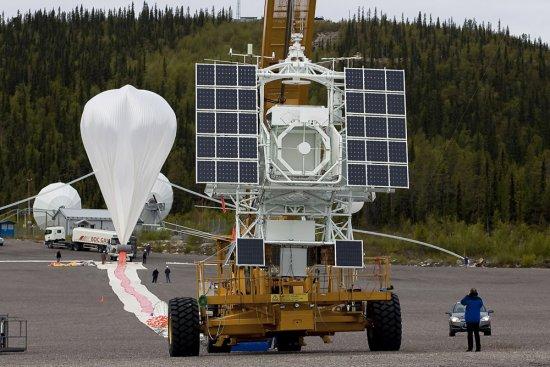 |
SUNRISE III Technical Meeting Place: IAA-CSIC Summary: The Antarctic stratospheric balloon SUNRISE is a collaboration between Germany, the United States and Spain which carry on board a new technology C/Si C solar telescope (the primary mirror has 1 m aperture and only weights 60 kg). The telescope carries three main post-focal instruments: a spectro-polarimeter, a camera with a universal birefringent filter and a magnetometer. The IMaX magnetometer is entirely Spanish and based on liquid crystal optical retarder (ROCLI) technology, which is also Spanish. It is being developed by a consortium of four institutions: the IAC, INTA, GACE, in Valencia, and the IAA. In this meeting, held at the IAA-CSIC in November 11th-15th 2019, a technical revision of the three instruments of the mission (IMaX+, SCIP and SUSI) will be performed. Date: November, 11th- 15th 2019 URL: |
|||
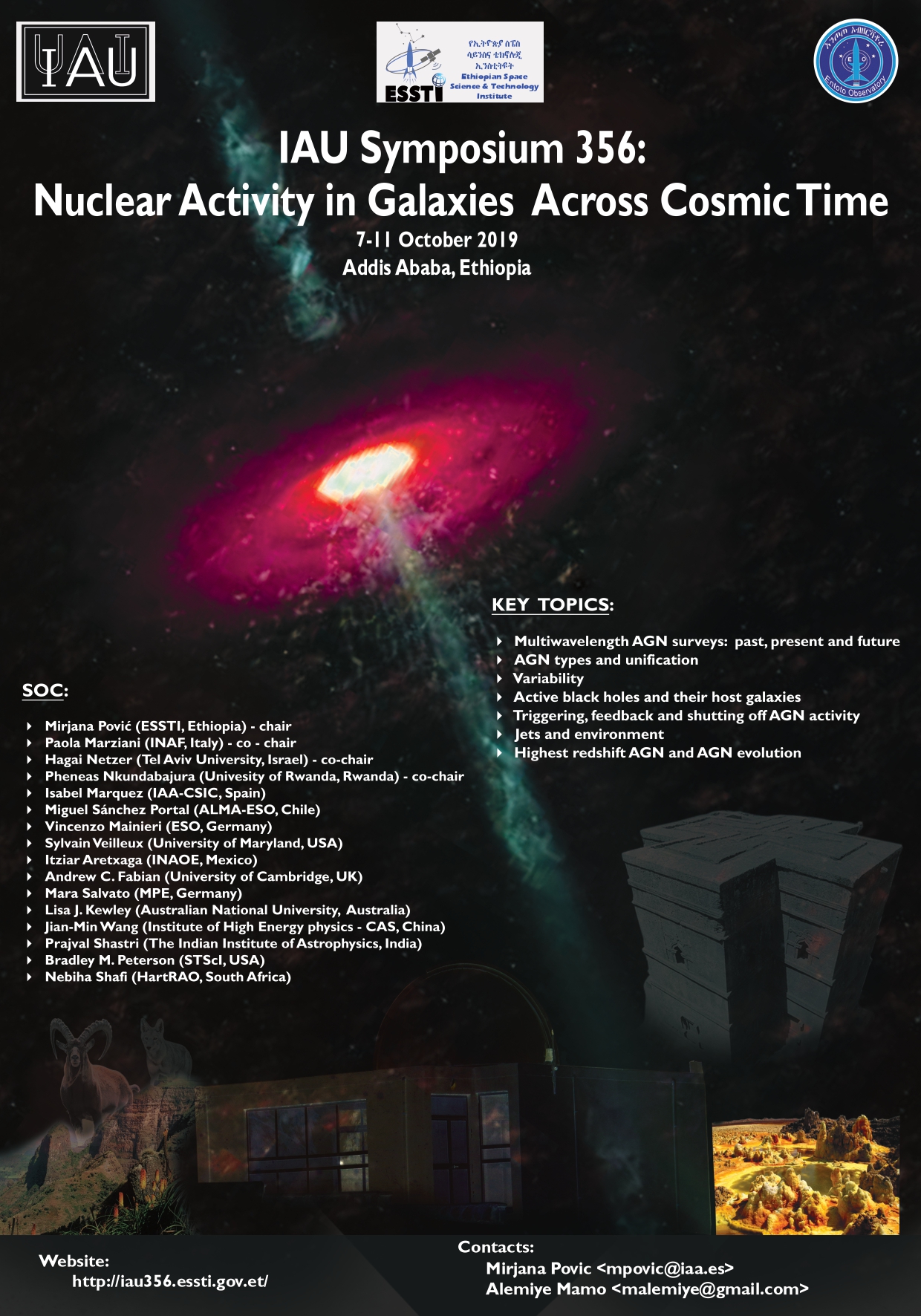 |
IAU Symposium 356: "Nuclear Activity in Galaxies Across Cosmic Times" Place: Addis Abeba Summary: Organizing this IAU symposium in Ethiopia about the ‘Nuclear Activity in Galaxies Across Cosmic Time’ has two main objectives. First, we want to have a general overview of AGN physics, including recent findings and progress in observations, simulations, and theory, and to discuss some of the open questions required for the understanding of the role of AGN in the broader context of galaxy evolution. Second, with this symposium we would like to bring for the first time world experts in our field to the East-African region and contribute to the development of science in Ethiopia and Africa, which is very much needed. Different countries of Sub-Saharan Africa, including Ethiopia, are now having first generations of students doing their MSc and PhD degrees. By organising this sympoisum in Ethiopia, we want to contribute to inspire new generation of scientists, and in particular astrophysicists. We also want to show our support to countries that just now start the scientific and technological development in astronomy and space science. In addition, a training for graduate students and for the secondary school teachers will be carried out by conference experts before and after the symposium. Outreach activities will be also organised for general public and school children who for the first time will have an opportunity to interact with world expert astronomers. Date: October, 7th- 10th 2019 URL: https://iau356.essti.gov.et/ |
|||
 |
6th Workshop on Robotic Autonomous Observatories Place: Torremolinos (Spain) Summary: Ten years after the celebration of the First Workshop on robotic autonomous observatories in Málaga, the number of automatic astronomical facilities worldwide has significantly grown, as well as the level of robotisation, autonomy, and networking, with many recent developments motivated by the search of new electromagnetic counterparts to gravitational waves in the next months. This has a strong impact in many other astrophysical fields, like fireballs detection, minor planet studies, the search for extra-solar planets, the monitoring of variable stars in our Galaxy, the study of active galactic nuclei, the detection and monitoring of supernovae, and the immediate follow-up of high-energy transients such as cosmic gamma-ray bursts, besides the search of neutrino and gravitational waves electromagnetic counterparts. Last, but not least, space debris surveillance and tracking is another field of increasing interest. Educational aspects will be also covered. Date: September, 30th- October, 4th 2019 URL: |
|||
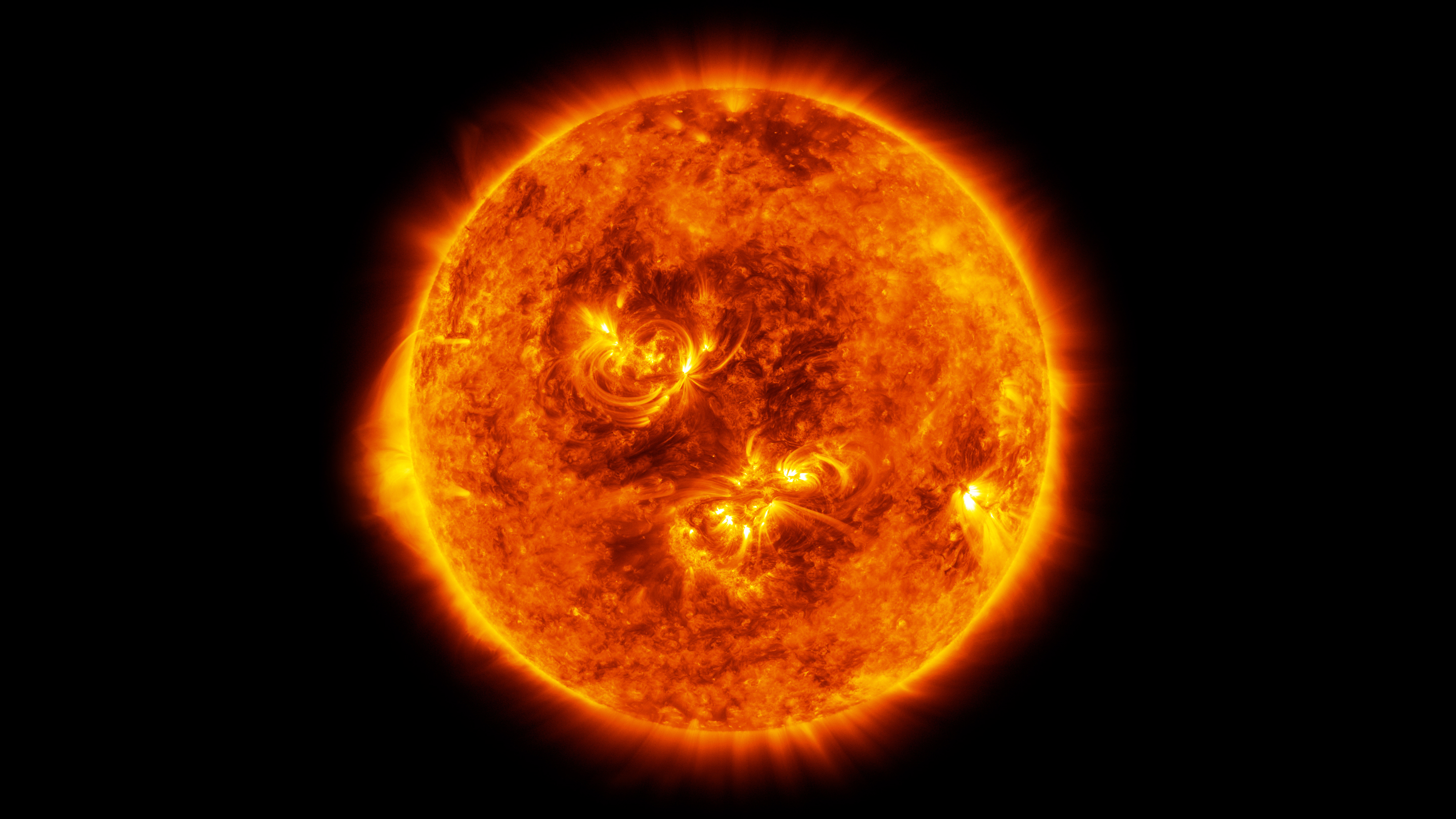 |
SOLARIS-HEPPA Working Group Meeting Place: IAA-CSIC Summary: The meeting focuses (but is not limited to) results of the five SOLARIS-HEPPA working groups (https://solarisheppa.geomar.de/workinggroups):
For this meeting, only invited and contributed oral presentations are planned (i.e., no poster presentations). Sufficient time will be allocated for discussions on individual WG results as well as for a general discussion on SOLARIS-HEPPA research. Limited funds for travel support for early career scientists (PhD students and Postdocs within 4 years after your PhD) have been made available by SPARC/WRCP. Please let us know as soon as possible (but not later than 15 July 2019) if you would like to apply for support (by sending an email to bernd ”at“ iaa.es ). Date: September, 18th- 19th 2019 URL: https://solarisheppa.geomar.de/granada2019 |
|||
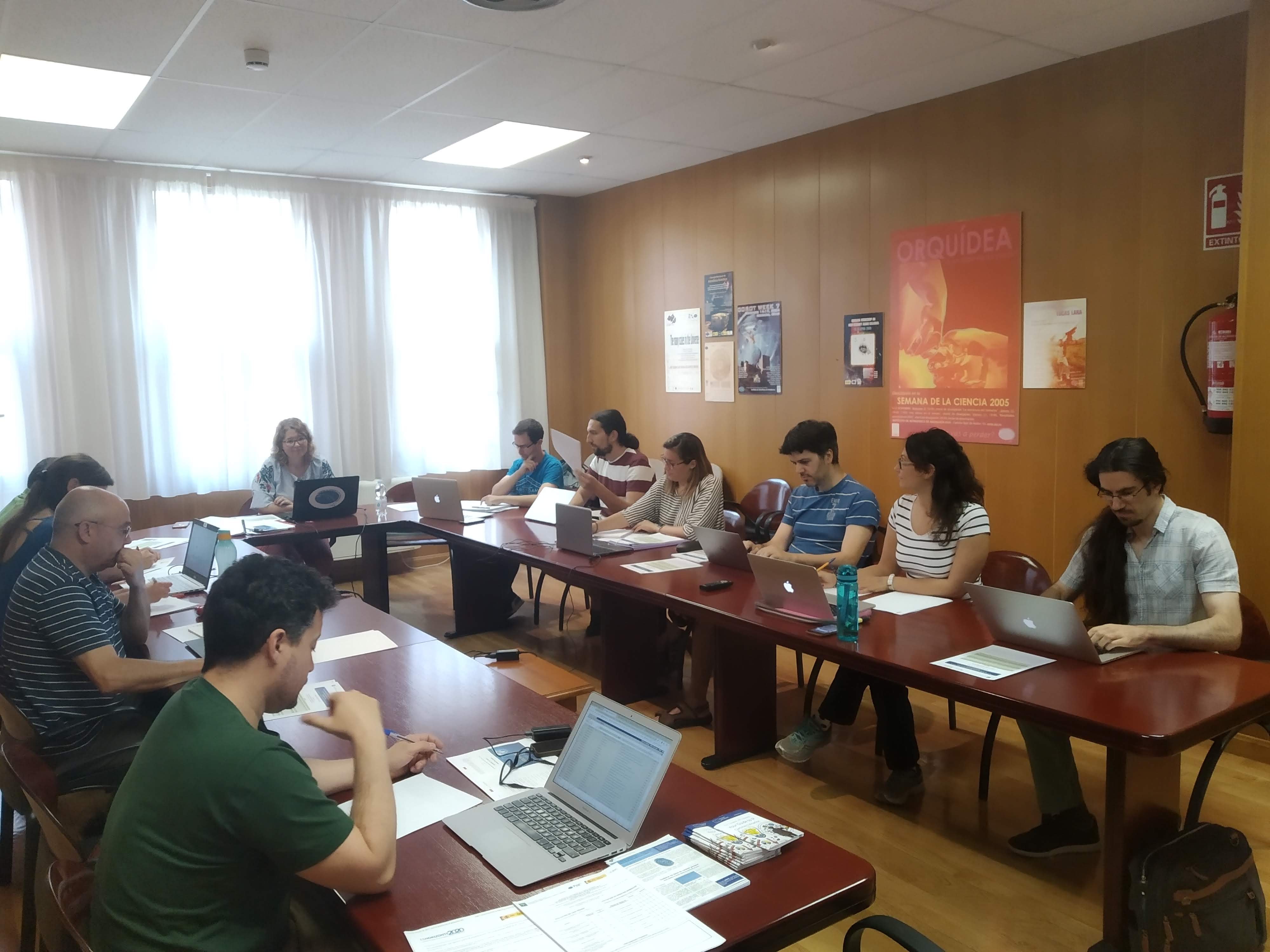 |
Key Aspects in the Preparation of a Competitive Proposal MSCA-IF Place: IAA Boardroom Summary: Specialized seminar, aimed mainly at researchers from the Instituto de Astrofísica de Andalucía (IAA), interested in finding out about the possibilities of participation and financing within the MSCA Programme, and more specifically within the Individual Fellowship H2020-MSCA-IF-2019, of the Horizon 2020 Framework Programme for Research and Innovation (2014-2020). The Seminar is divided into three blocks. The first two will fundamentally describe the objectives and main characteristics of the MSCA Actions, providing participants with information on which modality of the H2020-MSCA-IF-2019 call is most suitable for them. In the second block, the practical issues and success stories of MSCA projects awarded in the last calls will be addressed. In the last block, the entire application process will be carried out. Date: June, 13th2019 URL: |
|||
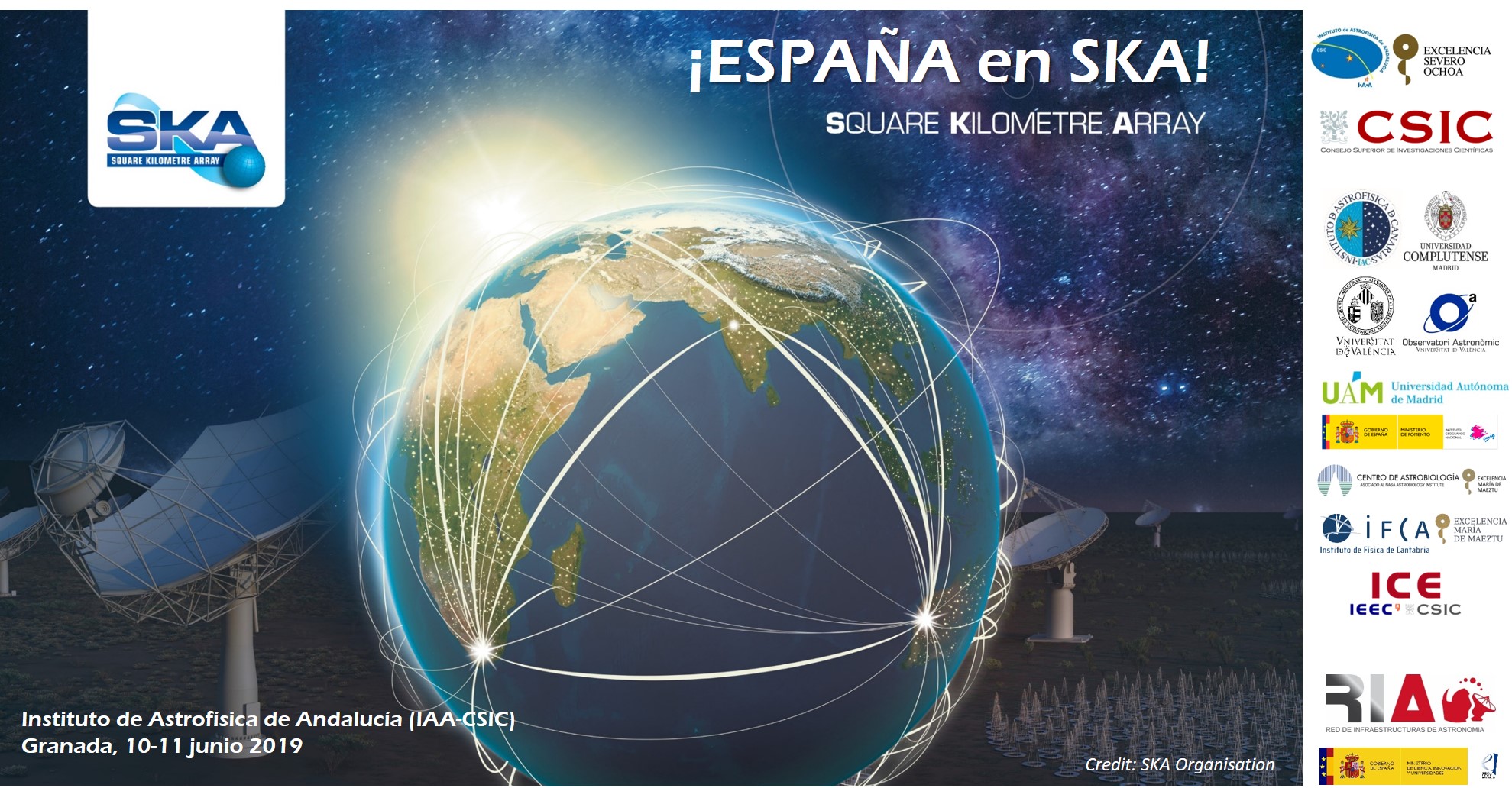 |
¡España en SKA! Place: IAA Summary: This meeting assembles more than 75 attendees from 26 different institutions, with the aim of creating the necessary synergies to ensure the maximum scientific return of SKA, and provide an overview of this project and its most recent aspects. Date: June, 10th- 11th 2019 URL: https://bit.ly/2I2ybVc |
|||
 |
17th J-PAS Collaboration Meeting Place: Madrid Summary: We invite all J-PAS members to the 17th J-PAS Collaboration Meeting. The meeting will focus on the science exploitation of pathfinder data, as well as on the preparation of the J-PAS survey strategy. The meeting will take place in the main lecture hall of the Institute of Agricultural Sciences (ICA), located in the main CSIC campus (Madrid). It will start on Monday the 20th of May, at lunch time, and finish on Thursday the 23rd. Date: May, 20th- 23rd 2019 URL: https://j-pas.org/collaboration/seventeenth_j-pas_meeting |
|||
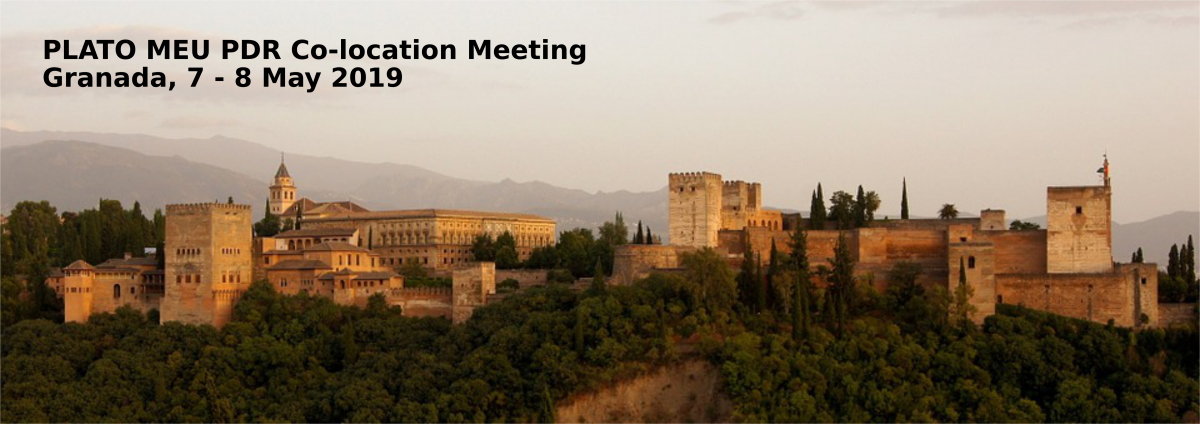 |
PLATO MEU PDR Co-location Meeting Place: IAA-CSIC Summary: The main objective of this meeting is to complete the PLATO Main Electronics Unit Preliminary Design Review. This review will ensure an adequate baseline of the payload architecture design and interface design towards the units of the PLATO Payload. The PDR includes the unit hardware and the FPGA (hardware and software interfaces). The MEU PDR co-location meeting will take place in Granada the 7 and 8 of May 2019, the registration form will be available until the 26th of April. The PLATO mission aims at detecting and characterising extrasolar planetary systems, including terrestrial exoplanets around bright solar-type stars in the habitable zone, for more information see mission site. The PLATO Main Electronics Unit (MEU) manages a group of twelve telescopes. In total two MEU exists on the PLATO payload for managing all 24 telescopes. Each MEU contains 6 data processing units (N-DPUs) in order to distribute the processing charge. Each N-DPU manages the images from two telescopes interfaced by two SpaceWire links. After processing of data received the processed data products are sent via SpaceWire router to the Instrument Control Unit. The Power Supply Units are responsible for power-on/off and supplying the N-DPUs. The MEU consortium is lead by IAA and it is formed also by IAC, with the industrial support of CRISA-ADS. The IAA develop MEU with the industrial support of TASE. Date: May, 7th- 8th 2019 URL: https://platomeupdr.iaa.es/ |
|||
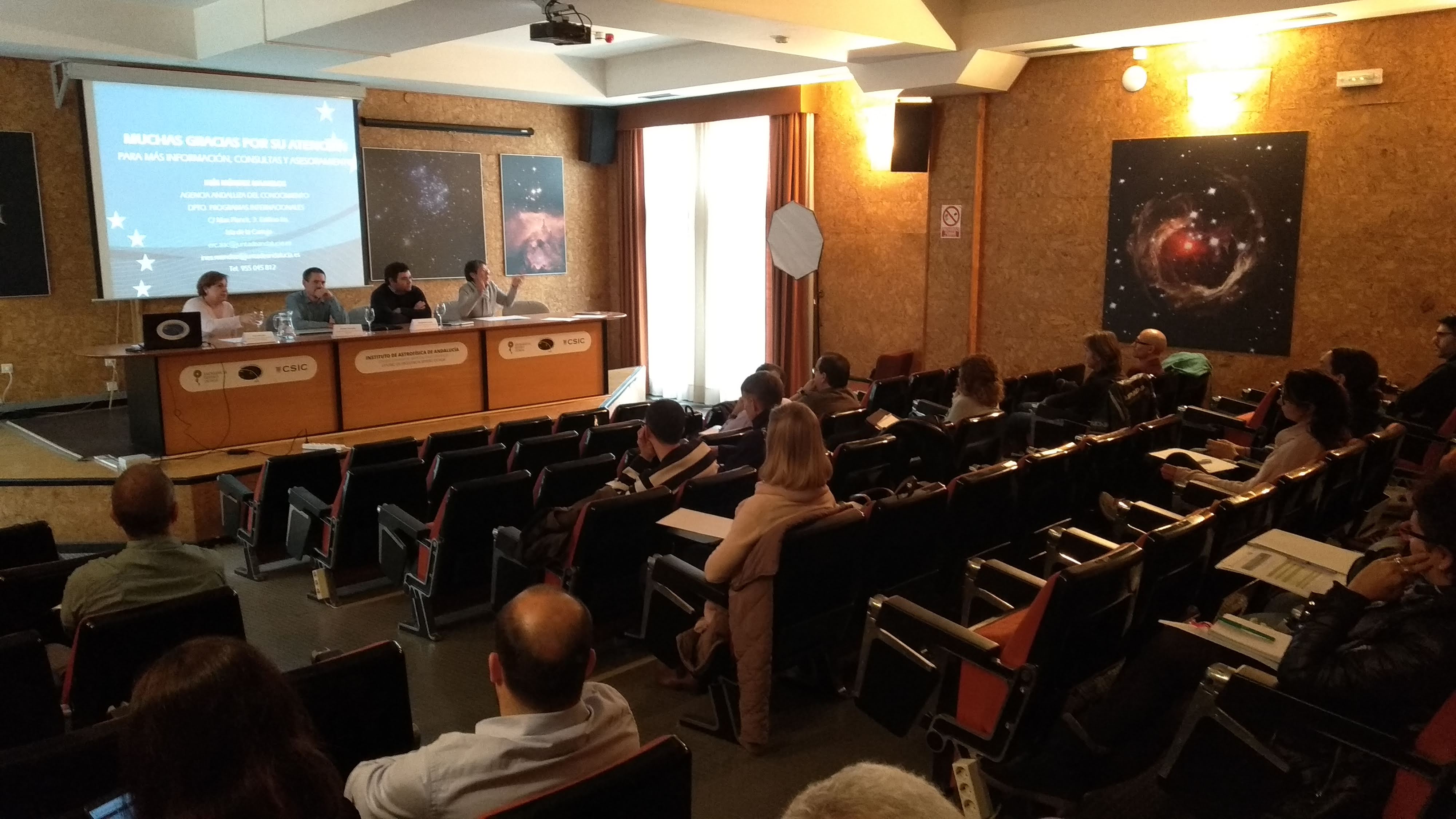 |
Seminar on Preparation of Proposals to the European Research Council (ERC) Place: IAA Conference Hall Summary: The objective of this Seminar is to train IAA researchers interested in the preparation of a proposal for ERC Programme Calls. The aim is to provide the tools and key aspects, both theoretical and practical, to be taken into account when drafting a competitive proposal. The Seminar is divided into three blocks. In the first one, the main objectives and characteristics will be described. ERC (Starting, Consolidator, Advance or Synergy Grant) calls, providing information to participants on which modality of the call is most suitable for them according to eligibility criteria based on excellence, and in their research trajectory. In the last blocks, practical questions for the drafting and key elements in the evaluation of the proposal will be addressed. Date: April, 23rd2019 URL: |
|||
 |
PLATO Limb-Darkening Meeting #1 Place: IAA-CSIC Summary: The main objective of this workshop is to bring together people from the exoplanet and stellar communities working on this topic, with particular emphasis on the work to be done in the context of the ESA PLATO mission. The limb-darling parameter is nowadays an essential ingredient in stellar and planetary studies, hence the importance of this dedicated WP for the scientific preparation and future exploitation of the PLATO space mission. This parameter is frequently found during the exoplanetary transits’ fitting process. In this workshop we will discuss about alternative methods to determine the limb-darkening that help us to validate the values obtained. Date: February, 26th- 27th 2019 URL: https://platoldmeeting.iaa.es |
|||
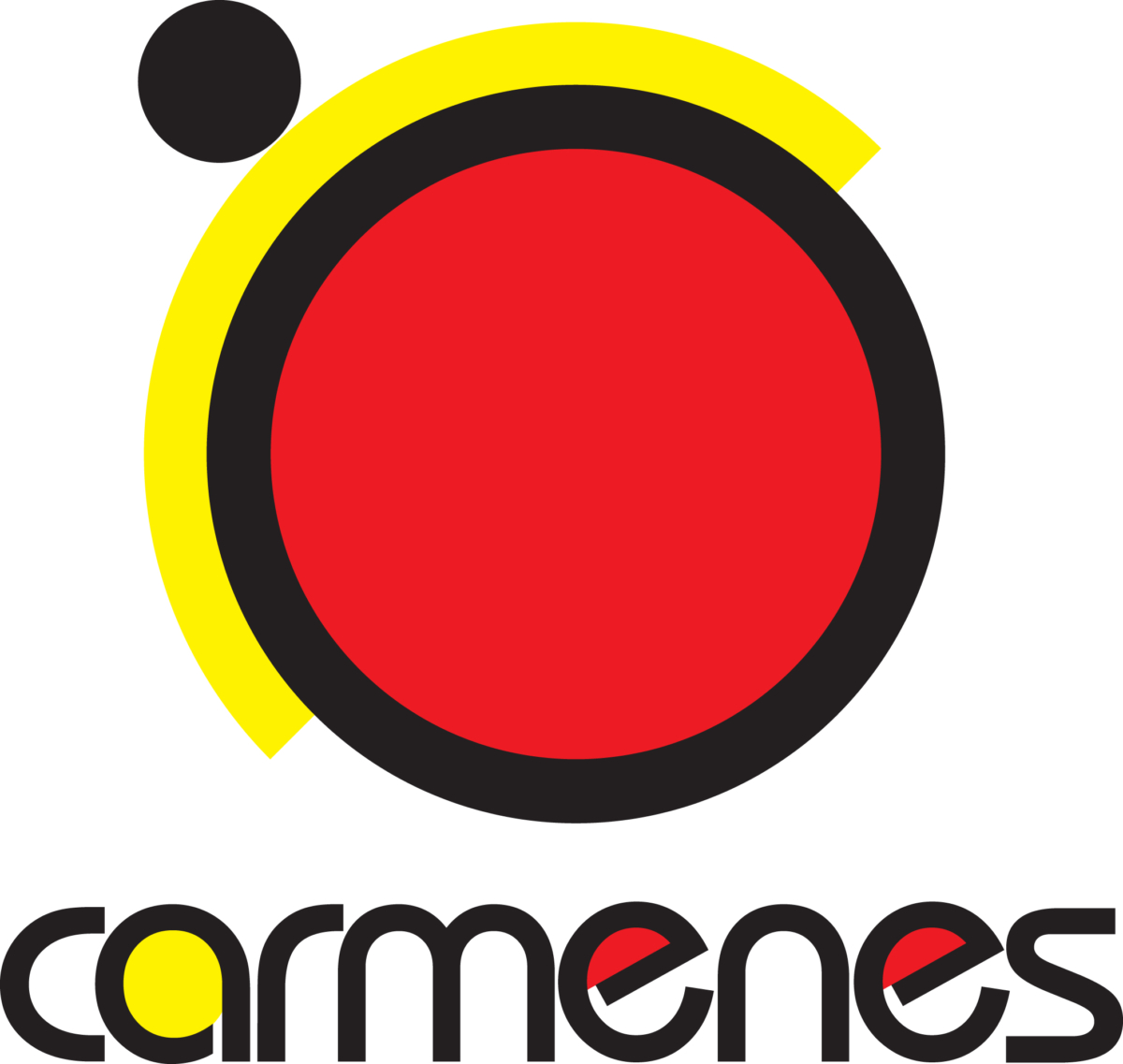 |
Ciencia presente y futura con CARMENES & 1er encuentro EXONET Place: IAA-CSIC Summary: In the last 20 years since the first planet was discovered, the search for and detection of Earth-like planets has become a dominant focus in exoplanetary and global research, allowing the number of discoveries to increase exponentially. The current sample is large enough to begin to understand how planetary systems similar to ours have formed and to assimilate that stars with planets in orbit are the rule, not the exception. We have also begun to understand that these systems cover a great diversity in architecture, some very different from that of our own solar system, which also implies a diversity in their formation and evolution. Recently we have begun to investigate the atmospheres and internal structures of these extrasolar planets with the objective of finding and characterizing those that present analogies with our Earth. Spain has only recently joined this field, but it has done so with reference contributions from both space and Earth. This is the case of the CARMENES project, co-led by Spain, which since 2016 is discovering planets and contributing to their characterization. The objectives of the meeting are to present and update the community on the scientific and technical status of the CARMENES project, providing detailed information on the specifications of CARMENES, as well as on data management and policy and all the information needed to facilitate proposals, access to the instrument and analysis of data from Spanish groups interested in observing with CARMENES. In addition, the meeting will allow us, both the consortium and the rest of the community groups, to present our research with CARMENES data, whether ongoing or published, as well as new ideas for using the instrument, with the aim of strengthening collaboration and synergies between projects. Finally, the organization of this meeting in the same week and place as the Spanish Network of Exoplanets (Exonet) will facilitate the discussion of the future of CARMENES, as well as the community's interests in other similar instruments in which Spain is involved (ESPRESSO, HIRES) Date: February, 20th- 22nd 2019 URL: https://riastronomia.es/ciencia-presente-y-futura-con-carmenes/ |
|||
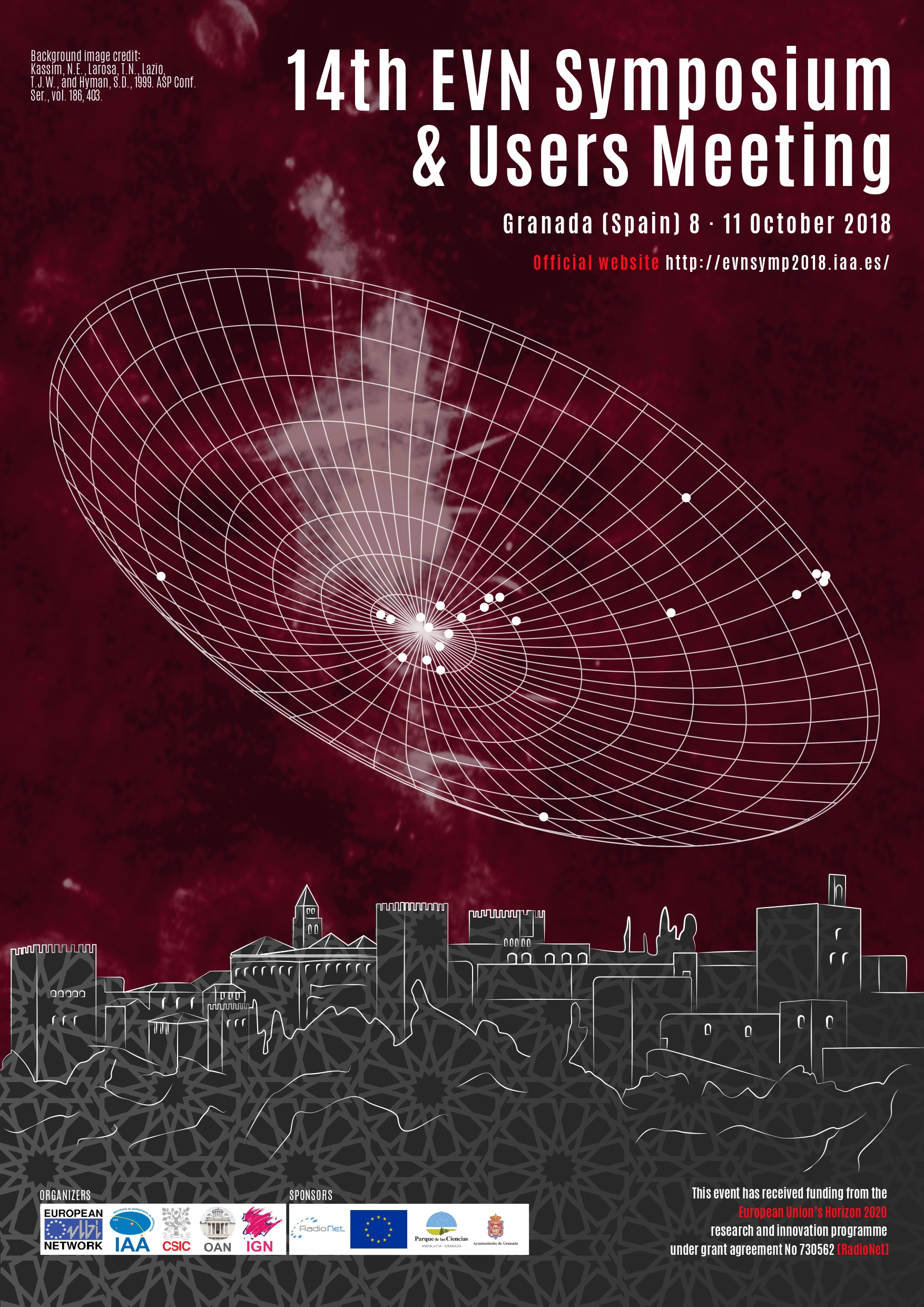 |
14th EVN Symposium & Users Meeting Place: Parque de las Ciencias (Granada) Summary: The 14th European VLBI Network (EVN) Symposium and Users Meeting will be hosted by the Instituto de Astrofísica de Andalucía-CSIC in Granada (Spain) on behalf of the EVN Consortium Board of Directors. The meeting will take place on October 8-11, 2018 at the main auditorium of the Parque de las Ciencias of Granada, the science museum of the city, within walking distance from the historic areas of Granada. This biennial meeting is the main forum for discussion of the latest very long baseline interferometric scientific results and technical and technological developments within the EVN member countries. At this meeting there will also be a chance for user input into the future Science Vision for the EVN. Date: October, 8th- 11th 2018 URL: https://evnsymp2018.iaa.es/ |
|||
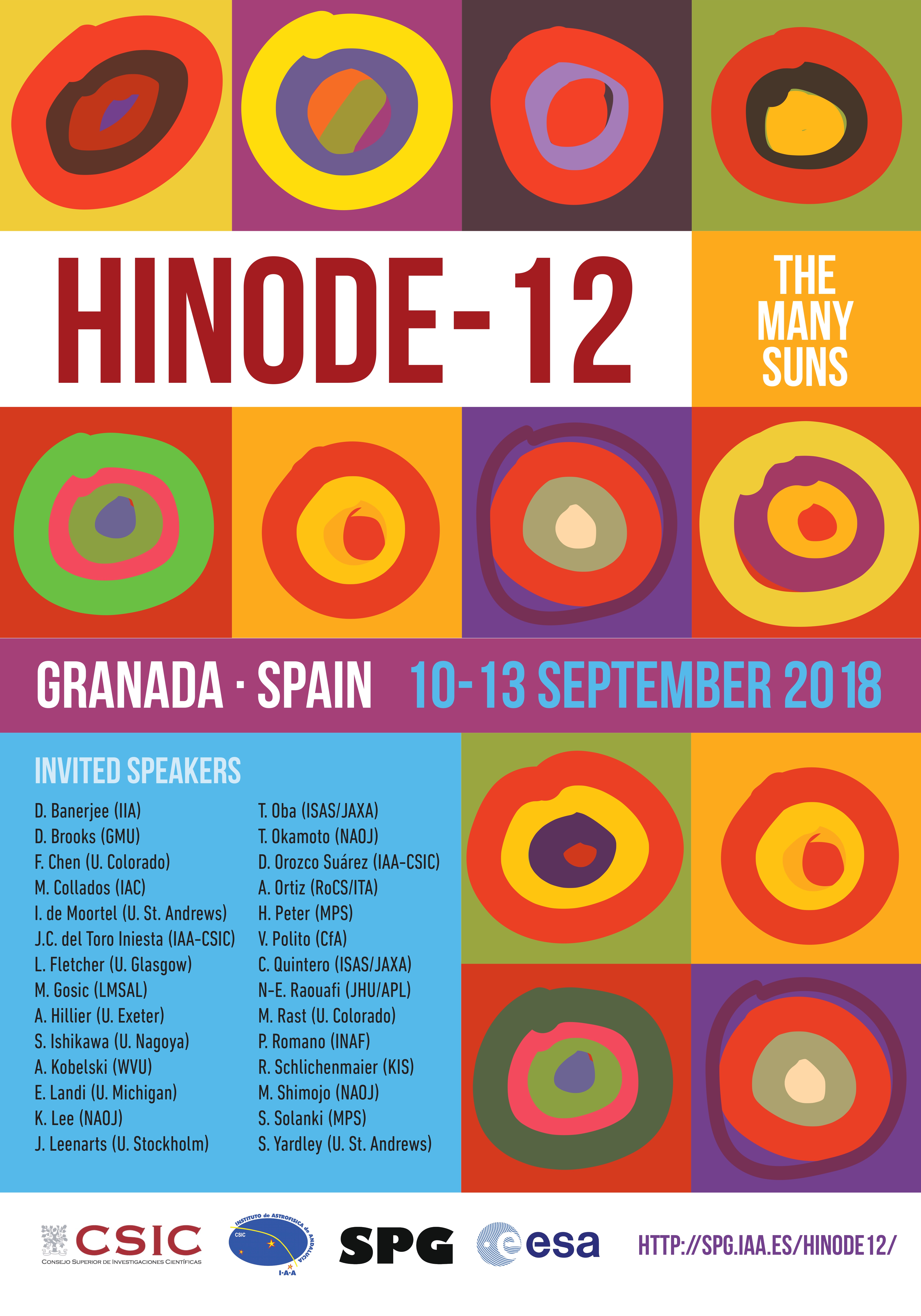 |
Hinode 12 - The many suns Place: Granada Conference Center Summary: Hinode is an active mission devoted to the study of the Sun. Launched in 2006, it is still the reference mission for high-resolution measurements of the solar atmosphere, specializing in visible spectropolarimetry, EUV spectroscopy and X-ray imaging. Its unique capabilities remain unsurpassed and explain the very high, sustained scientific return of the mission. Hinode science meetings are organized yearly to bring together the Hinode, IRIS and ground-based community to discuss recent results and plan coordinated observations. The Hinode-12 meeting will be the sixth of the series to be held in Europe, following Hinode 1 in Dublin (2007), Hinode-4 in Palermo (2010), Hinode 6 in St. Andrews (2012) and Hinode 9 in Belfast (2015). Date: September, 10th- 13th 2018 URL: https://spg.iaa.es/hinode12/ |
|||